Existing User Log In
New User Registration
Register for a free account to gain full access to the VGChartz Network and join our thriving community.



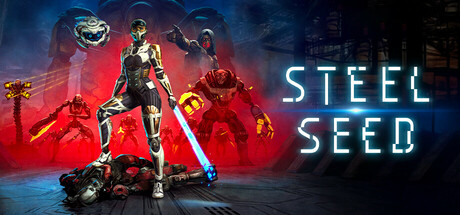

America - Front


America - Back

Storm in a Teacup
Action-Adventure
 (Add Date)
(Add Date) (Add Date)
(Add Date) (Add Date)
(Add Date)
| Owners: | 0 |
| Favorite: | 0 |
| Tracked: | 0 |
| Wishlist: | 0 |
| Now Playing: | 0 |
It's rather fitting how Steel Seed's protagonist, Zoe Archer, is uncomfortably strapped to an operating table at the beginning. Even with her father running these tests, the scene still captures an air of uncertainty. Likewise, anyone who's familiar with developer Storm in a Teacup's oeuvre and is coming in blind here will be on similar footing. It's not often that a modest team previously focused on walking sims swings for the fences. And though such a change is welcome by me – who didn’t care for the team's former work (e.g. Close to the Sun) – the obvious question is whether it's bitten off more than it can chew.
As though in a deep slumber, Zoe is woken up in the far future by a flying robot named Koby. She's a stranger in a strange industrial land. And before she can even get concrete answers to any questions, she's forced to fight or flee for her life. If it's not the vicious robots trying to kill her it's the dangerous hazards within this gargantuan facility. After an opening salvo of robot slaughter, close calls, and enough explosions to make Michael Bay blush, things settle down once Zoe finds the only other helpful AI: S4VI (pronounced "savy").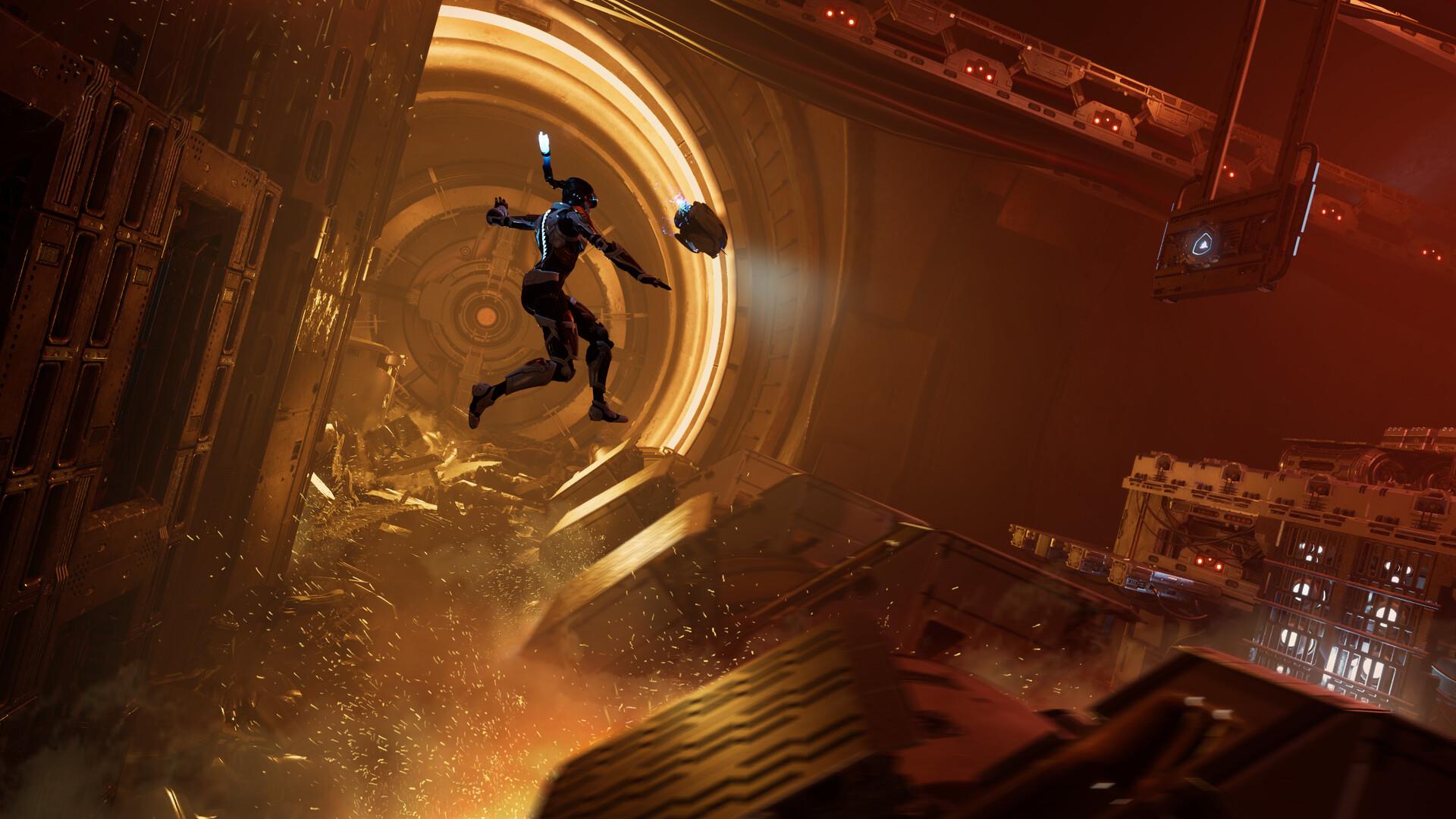
For those well-versed in science fiction, S4VI's regaled history will seem practically rote at this point. Humanity's excesses led to a ruined Earth via climate change; fortunately, Dr. Archer's foresight inspired him to make several technological advancements. To prevent total annihilation, humans' consciousness became stored digitized data – "Seeds" – while AIs were tasked with rebuilding infrastructure until Earth became habitable again. Now, over a millennia later, the time has arrived. In order to jump-start the podded humans, Zoe must collect four shards of her father's consciousness spread across various nodes.
Again, anyone well-versed in the genre doesn't have to consult any tea leaves. Zoe has the verisimilitude of a human in a robotic exosuit, the best she can recall of her past are fuzzy fragments, and so on and so forth. Martin Korda, Luna Celletti, & Lorenzo Castelli's script doesn't so much incorporate themes about AI and identity, but rather bluntly doles them out through dialogue exchanges. There's really no avoiding that approach when all that really happens between the beginning and end of this grand mission is Zoe and Koby becoming better friends. There's not much else beyond some world-building collectibles and the pair's Marvel-tier banter – made all the worse by subpar English voice acting. 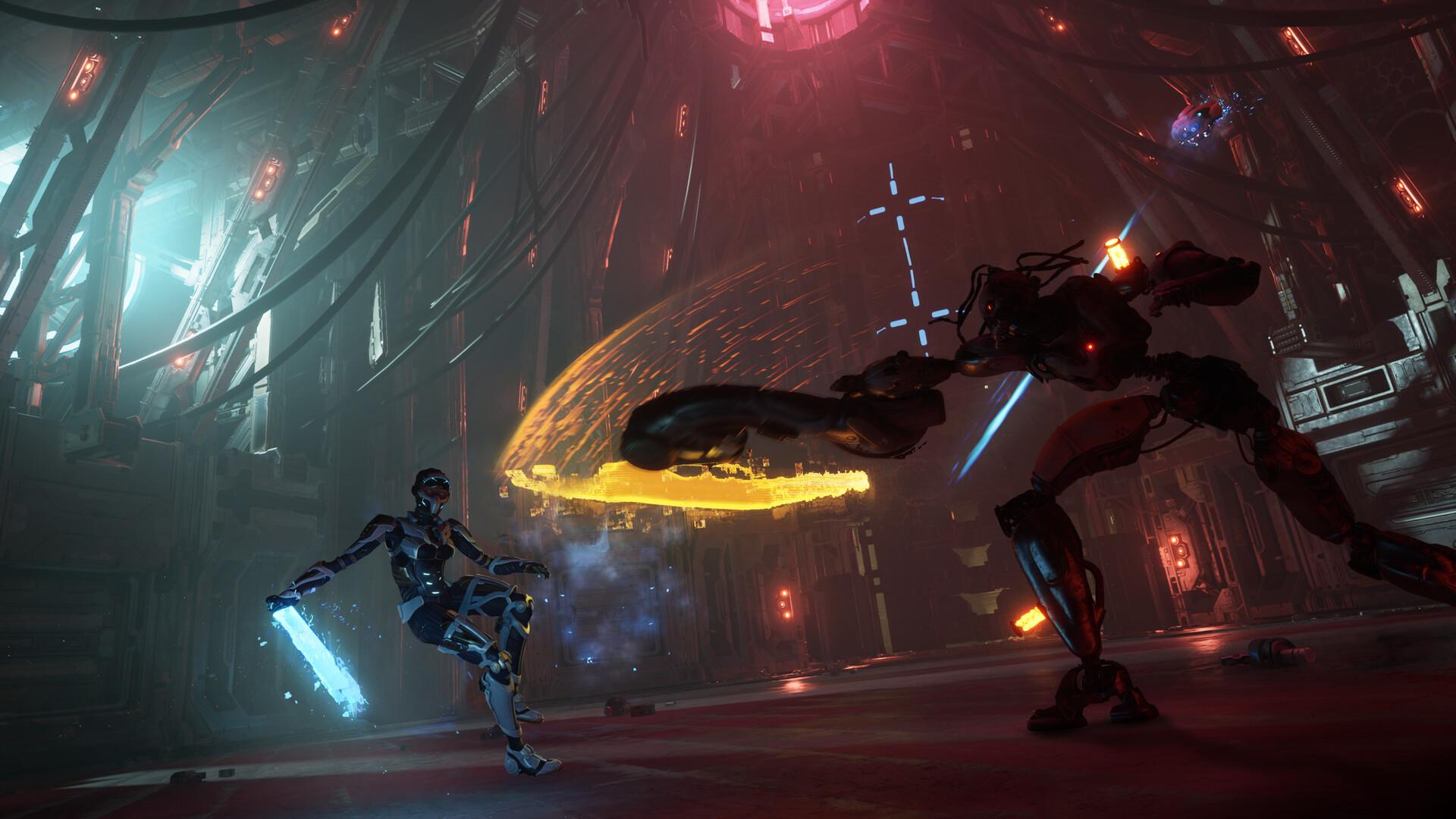
Of course, one could dispute my dismissive attitude and also point towards its environmental storytelling. Navigating a fully-automated facility the size of New York City – judging by some of these impressive skyboxes – does create an imposing atmosphere compared to Zoe's relative size. That's true to an extent, but the key contention here is framing: each node constructs its levels as segmented gameplay playgrounds with a particular visual theme, rather than interwoven worlds like, say, Dark Souls or The Last of Us. Certain activities are happening in the background, but the team's design priorities feel implicitly different.
That design ethos certainly has its own benefits. The various metallic sets often look aesthetically stale, but they succeed in drawing your attention towards enemy patrols and environmental traps. They're big industrial junctions disguised as puzzle boxes for you to determine how and when to unravel your robotic enemy's defenses. Though not the only means of spilling oil, Seed's systems are geared towards stealth. It includes most of the basics: many arenas begin with convenient chest-high walls or a height advantage, crouching in holographic 'grass' makes you invisible to every enemy when they're passively patrolling, gratifying stealth takedowns with Zoe's cyber-sword, a modest visual/aural detection system, and so on.
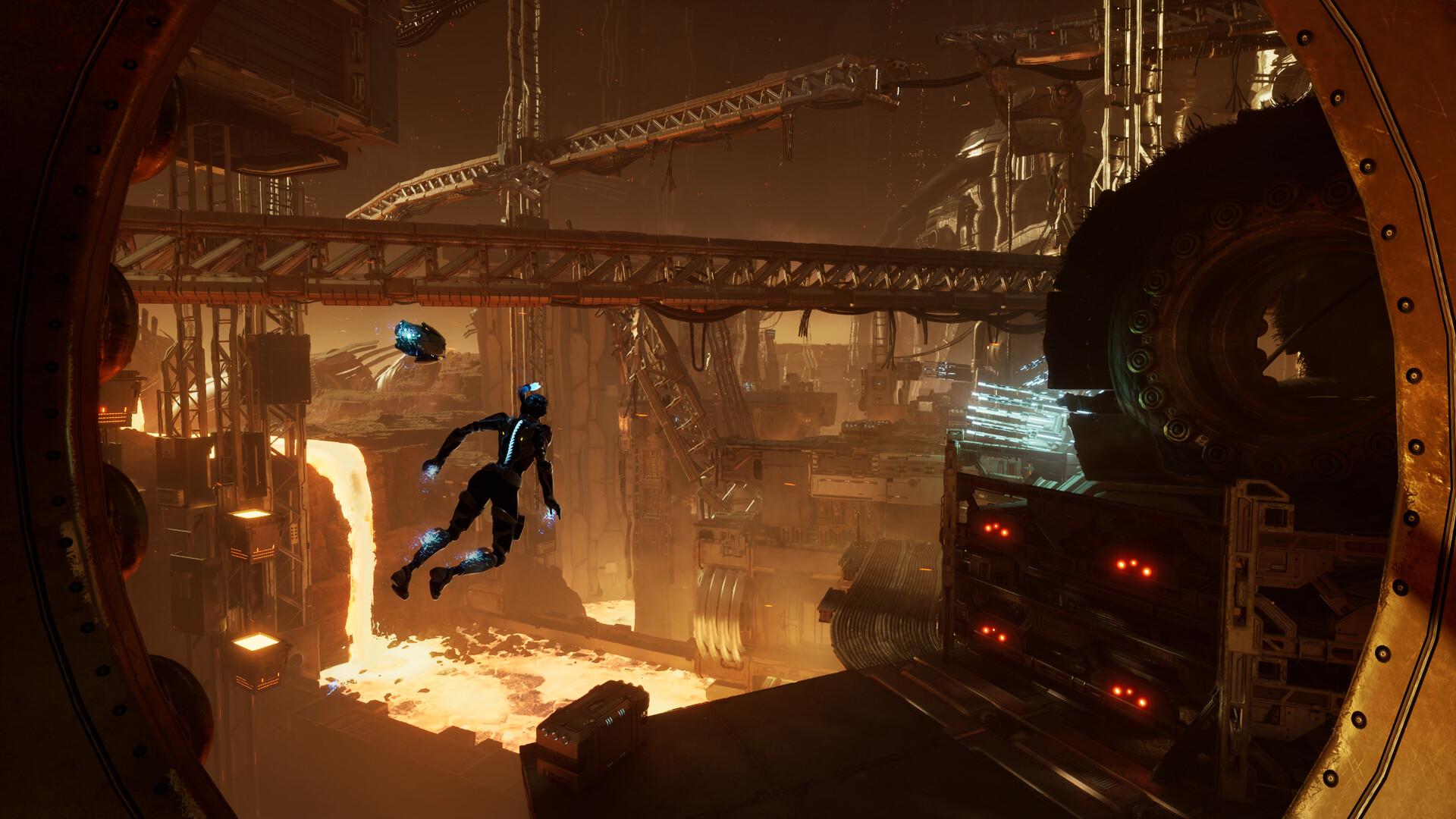
There's room for improvement, but the more granular details are where these systems truly shine. Enemy bots can also spot fallen comrades, but taking a few more seconds to harvest their 'Glitches' (in-game currency) causes the felled bot to disappear. Upgrading Koby's spotting ability will also highlight said enemy's patrol pattern, as though he tapped into their hard wiring. His hovering range makes him a great scout to temporarily control, plus his arsenal of mines and bullets proves useful in stealth and combat. There's a funny duality to his detection range though: he can be spotted when Zoe's behind the wheel, yet he's essentially invisible when acting as a default tag-along right above Zoe's shoulder; the quintessential Last of Us companion, if you will.
As you progress and reach "S4VI Points," you can upgrade abilities across stealth, utility, and combat. There's a catch: simply having enough Glitches isn't enough to upgrade an ability; there's a specific challenge threshold associated with each one. Want to automatically disintegrate every bot during a stealthy takedown? Then kill x amount in holographic grass. Want Koby to carry more ammo? Well, put him to good use. Even if certain demands feel a bit too particular, the broader idea of requiring players to explore various tactics in order to unlock greater abilities is fundamentally engaging.
Depending on your playstyle, this could backfire as well. The reason Seed swings for the fences isn't by being a middle-market stealth platformer – rare as that may be. No, the whole picture is it's a stealth-action platformer that can also play as a Souls-like. So, anyone who's tried to squeeze the most out of its stealth systems on Hard difficulty (like me) is in for a rude awakening towards the end when Zoe's ambushed and put through wave-based gauntlets. Of course, this can be rectified by fast-traveling back to past zones and fighting new robot copies to put towards vital upgrades. I'll admit to taking the 'game journo' route and lowering the difficulty at that point. Perhaps I shouldn't have; then again, spending over 12 hours focusing on a specific playstyle to then be forced into such finicky and occasionally-cheap combat dynamics wore against my patience.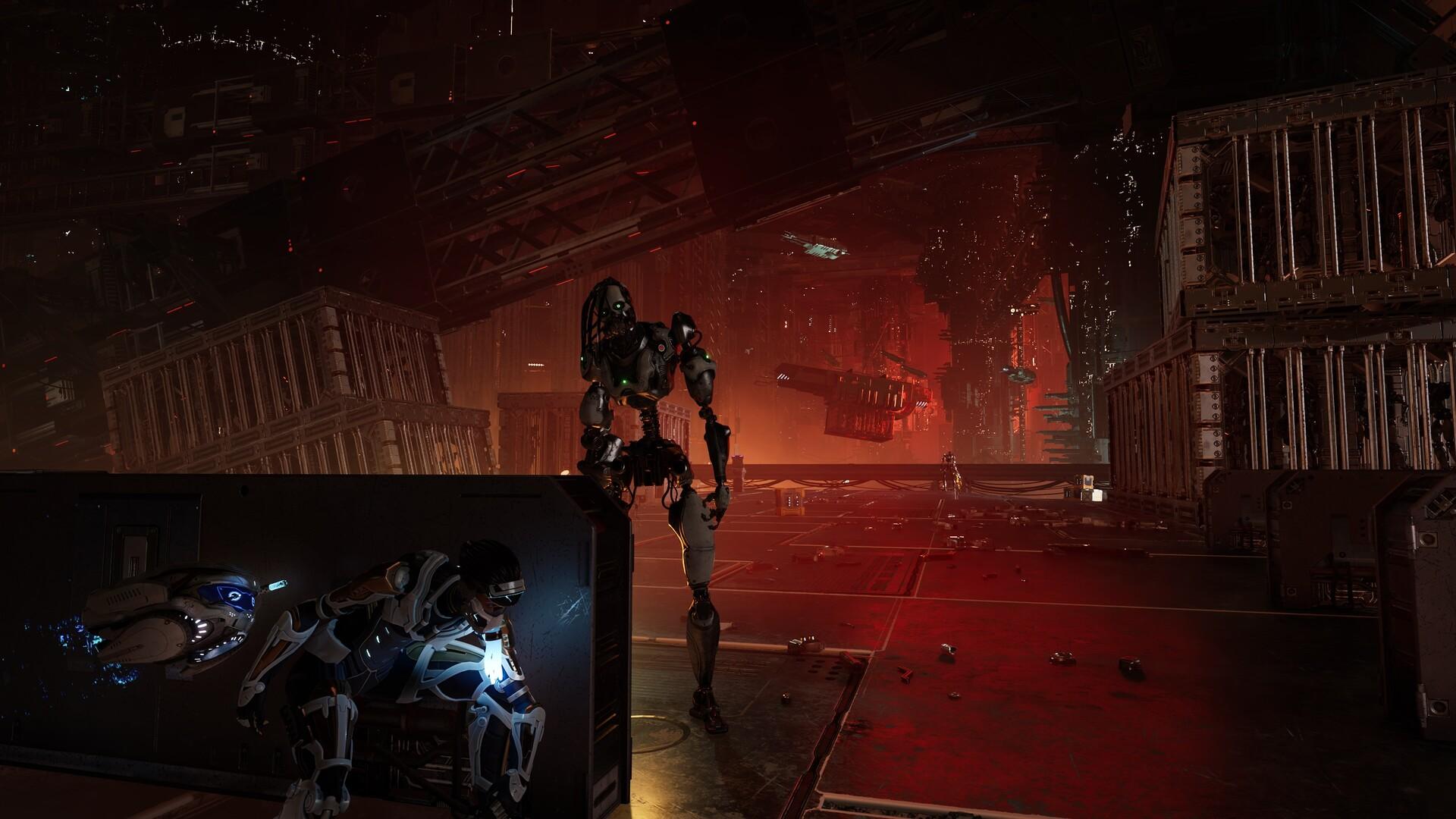
It's also a fool's errand to halfway incorporate a Souls-like ruleset amongst a sea of imitators who focus on it primarily. A barebones variety of robot minions isn't a big deal for stealth games because the focus lies more on level layout and experimentation; that excuse doesn't hold for spamming light and heavy attacks against the thousandth generic brawler. Without any block, parry, or action canceling, your defensive options are quite limited; plus, visually reading enemy strikes feels fundamentally misguided. There's something to the warning lights above enemy heads and their animations that make perfect rolls harder to pull off. These shortcomings are only intensified during those aforementioned ambushes, where difficulty in later waves is just tossing the most obnoxious enemies at the same time.
That's the core problem: gameplay comes together by... not quite coming together. Although still trying to respect the creative's own vision, my mind's eye can't help but wonder if a simpler level-based system without Souls-like affectations would've been the better route. There wouldn't be odd half-measures, such as the mix of bonfires but also infrequent checkpoints; moreover, dying just resets enemy minions and there's no lost Glitches you must recover from your past self either. So, then, what's really accomplished by this design? By trimming down and reorienting allocated development time, perhaps puzzle-platforming could've been more refined as a result. That's not to dismiss what's here as a substantial addition to stealth and exploration, but rather emphasize how extra polishing time could've erased those odd instances of not registering ledge-grabs or jumps.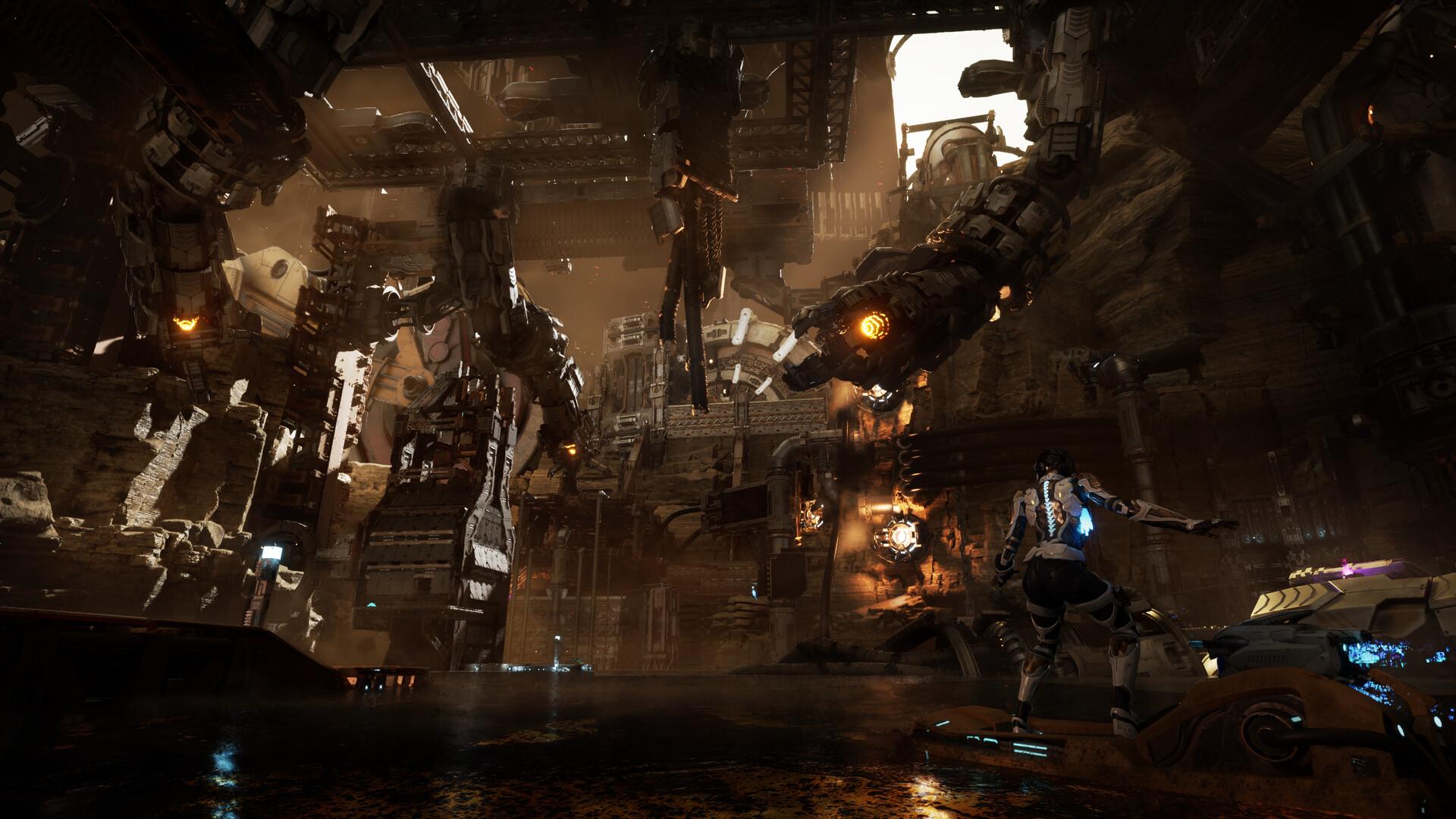
In keeping with this theme of trade-offs, a surprising example of this is Storm in a Teacup's greater emphasis on technological sophistication over presentational character. As jagged as I may be towards the team's past work, Close to the Sun's steampunk and N.E.R.O.'s fantasy tropes still had more visual & aural imagination compared to this cyber-industry style. There are some eye-catching nuances, particularly a couple of enemy designs, but the overall aesthetic feels like it was plucked directly from just another SyFy show. And though its vast scope powered by Unreal Engine 5 lends itself to some impressive vistas, I (again) can't help but wonder if scaling that back could've contributed to a consistent framerate the whole way through.
Steel Seed finds itself in a strange bind: a high-wire juggling act that equally deserves praise and admonition. To Storm in a Teacup's credit, it's genuinely audacious to shift gears from mechanically-light walking sims and smaller experiments to a maximalist stealth-action-platformer confection; at the same time, I wish the team had picked a goddamn lane. Fusing such disparate design tempos for the first time ultimately reveals the weakest link between them, which also in turn partly poisons the experience. Tie that in with a factory-made narrative and aesthetic, and what's left is a project I'm left to admire more than I can recommend.
Contractor by trade and writer by hobby, Lee's obnoxious criticisms have found a way to be featured across several gaming sites: N4G, VGChartz, Gaming Nexus, DarkStation, and TechRaptor! He started gaming in the mid-90s and has had the privilege in playing many games across a plethora of platforms. Reader warning: each click given to his articles only helps to inflate his Texas-sized ego. Proceed with caution.









